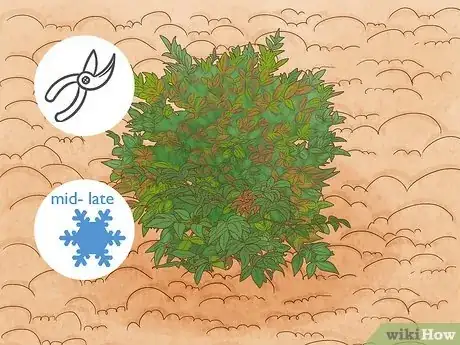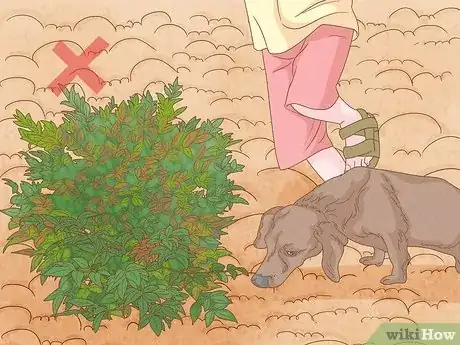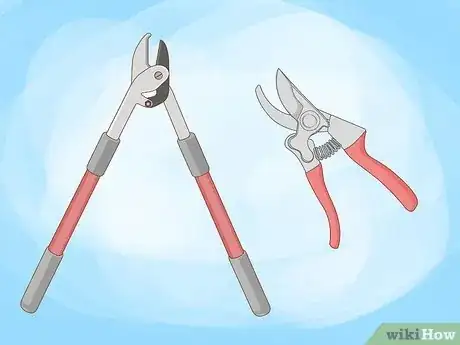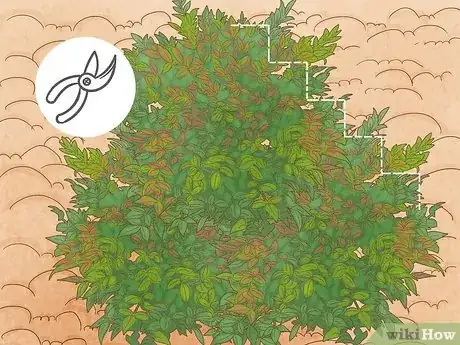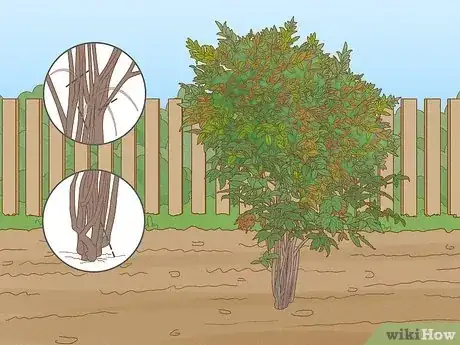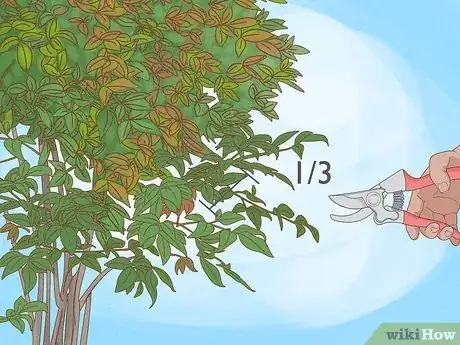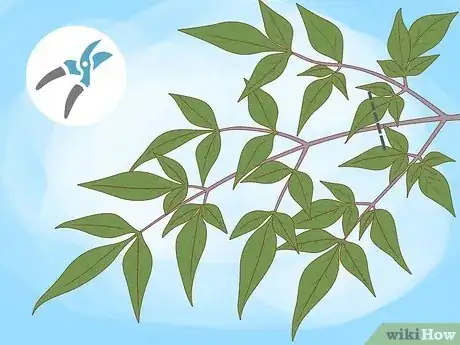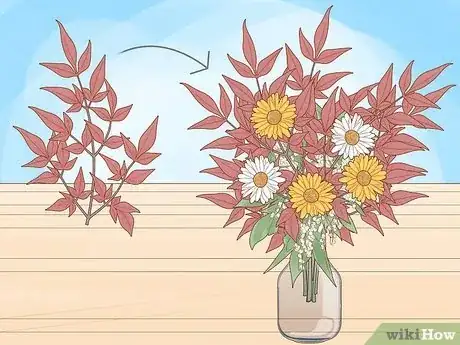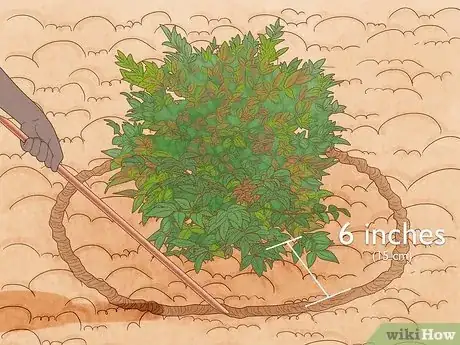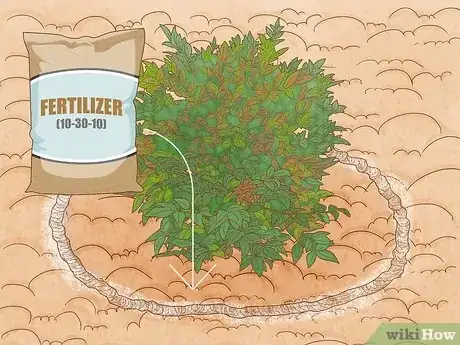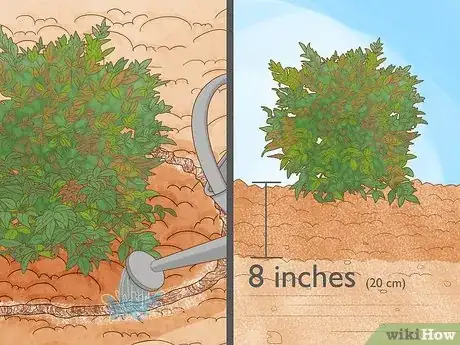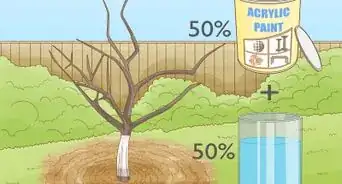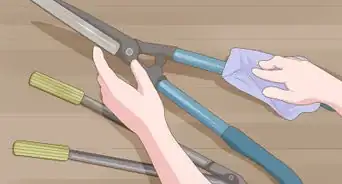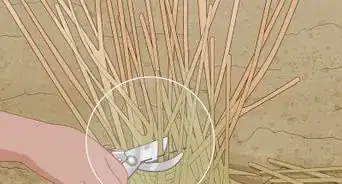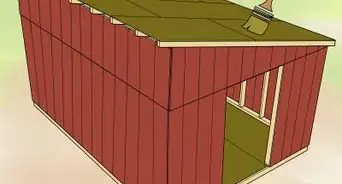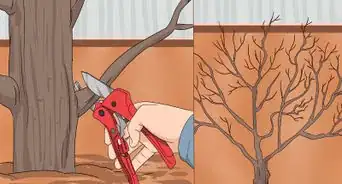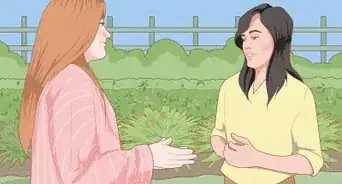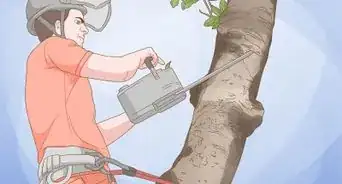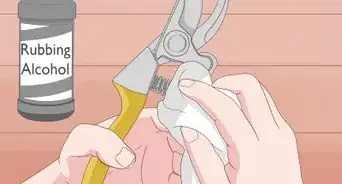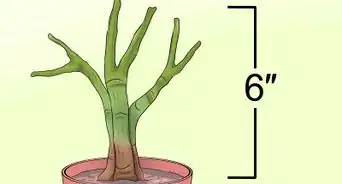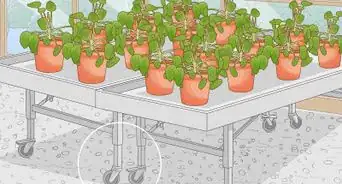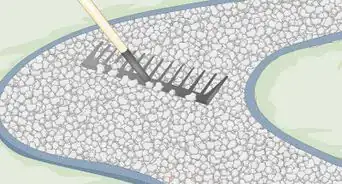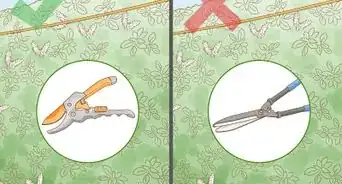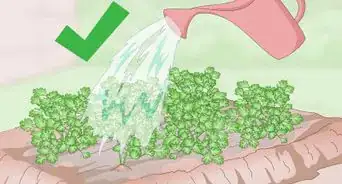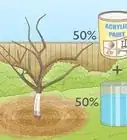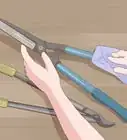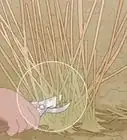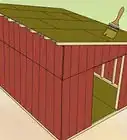This article was co-authored by Lauren Kurtz. Lauren Kurtz is a Naturalist and Horticultural Specialist. Lauren has worked for Aurora, Colorado managing the Water-Wise Garden at Aurora Municipal Center for the Water Conservation Department. She earned a BA in Environmental and Sustainability Studies from Western Michigan University in 2014.
This article has been viewed 62,336 times.
Nandina (Nandina domestica) is also known as "heavenly bamboo." Despite its name, it is not related to bamboo at all; it is actually a shrub with bamboo-like leaves. It gets white flowers in the spring, and bronze-tinted leaves in the winter. In the fall, it develops bright red berries. It is an aggressive grower, and without annual pruning, it can get unruly. Knowing how to properly prune a nandina will result in a healthy, gorgeous plant.[1]
Steps
Planning Ahead
-
1Prune nandinas in mid to late winter. While you can generally prune nandinas any time of the year, winter is the best time to prune. Not only is the plant dormant, but you can use the pruned stems in floral arrangements. The combination of bright green leaves and red berries is quite festive.
- If you cannot prune the nandina during winter, you can prune it during early spring before the white flowers develop. If you cut those off, you won't get the berries![2]
-
2Keep children and pet away from the nandina while pruning. The leaves and berries are toxic to consume. Their bright colors can make them look appealing to children and pets who are curious or don't know any better. If you decide to bring the cuttings indoors to use in arrangements, be sure to keep them out of reach of children and pets.Advertisement
-
3Get sharp bypass pruning shears and lopping shears. You will use bypass pruning shears on shoots that are thinner than 3⁄4 inch (1.9 cm). You will then need to switch to lopping shears for thicker branches. Both tools must be sharp in order to reduce wounding. You can purchase these in a hardware store or in a garden supply shop.[3]
Pruning the Nandina
-
1Make cuts in a staggered, step-like formation. Take a moment to look at your nandina and visualize where you want to cut. This will help keep you more organized in the future. The most visually-appealing formation for nandinas is the "stair-step" formation, where you cut the outer stems shorter than the central ones. It will also help with the formation of new shoots.[4]
-
2Prune the oldest or weakest branches first. Find the tallest, oldest branches on your nandina, and cut it down with your shears. Take a moment to locate any weak branches close to the ground, and cut them back as well. Do not prune more than a third of the stalks' lengths.[5]
-
3Cut the stems in one-third lengths for a fuller look. Prune the oldest, longest stems to a third of their length. Cut the next couple of stems down to half their length. Trim the rest of the stems to a quarter of their original length.
- Intermix cuts to give the bushes a fuller look.
- If you are working on an older plant, prune one-third of the old growth.
-
4Cut just above a branch or leaf node. This will allow new shoots to grow and prevent the plant from looking too bare. If you prune too far down the stem, the plant will look spindly and unappealing.
-
5Save some of the cut stems for floral arrangements, if desired. Many people find the combination of red berries and bright green leaves visually attractive. It is no surprise that trimmings often find their way into vases and other floral arrangements, especially during the winter. Instead of throwing away the cuttings, consider saving some of the nicer ones, and putting them into a vase.
- Place the cut stems into vases filled with cool water. They should last several days.
Fertilizing the Nandina
-
1Fertilize the nandina after pruning. Fertilizing after pruning is recommended because it provides a needed dose of nutrients to the plant and helps it get ready for the upcoming growing season. Once you clear away the pruned stems and leaves, try to fertilize that same day, or within a couple of days.
-
2Trace a 12 in (30 cm) ring around the base of the plant. You can trace the ring into the soil with a stick or with your finger. Keep the edges of the ring 6 inches (15 cm) away from the base of the plant. This will serve as a placement guide for the fertilizer.[6]
-
3Sprinkle a 10-30-10 granular fertilizer onto the traced ring. Don't worry if a few grains end up inside or outside the ring. You do not have to get it directly into the groove formed by the stick or your finger.[7]
- If you can't get a 10-30-10 granular fertilizer, a rhododendron or evergreen fertilizer will do just fine.
-
4Water the fertilizer to a depth of 8 inches (20 cm). This means that if you were to dig down 8 inches (20 cm), the soil will be wet.[8] If you do not water the plant deeply, then the fertilizer may damage the roots and kill it.
- How much water you use depends on how dry your soil is and how fast it absorbs water.
Warnings
- All parts of the nandina are toxic. Do not consume the leaves of berries. Keep them out of reach of children or pets.⧼thumbs_response⧽
Things You'll Need
- Bypass pruning shears
- Lopping shears
- Hand pruners
References
- ↑ https://www.hunker.com/13428447/the-best-time-to-prune-nandinas
- ↑ http://www.walterreeves.com/landscaping/nandina-pruning-2/
- ↑ https://www.hunker.com/13428447/the-best-time-to-prune-nandinas
- ↑ http://www.walterreeves.com/landscaping/nandina-pruning-2/
- ↑ http://www.thegardenhelper.com/nandina.html
- ↑ https://www.hunker.com/13428447/the-best-time-to-prune-nandinas
- ↑ https://www.hunker.com/13428447/the-best-time-to-prune-nandinas
- ↑ https://www.hunker.com/13428447/the-best-time-to-prune-nandinas
